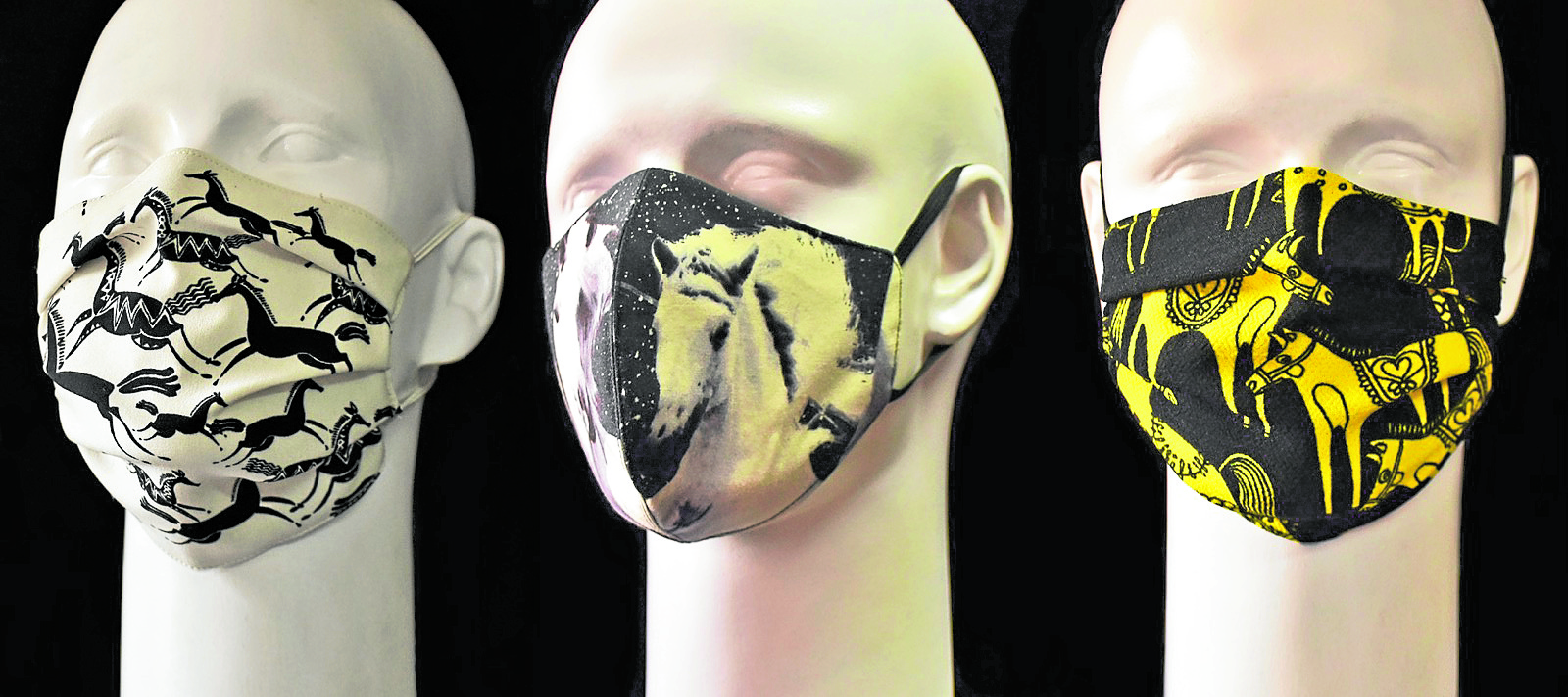
Wearing a face mask will remain a requirement for a long time. It is one of the three things people must do, along with social distancing and frequent hand washing, to limit the spread of the coronavirus.
Earlier this month, the New York Times ran an informative story, “Six months of coronavirus: Here’s some of what we’ve learned,” that listed insights of reporters and editors of its health and science desk. It reiterated the importance of wearing a mask.
The article quoted an infectious disease specialist: “Wearing a mask is better than nothing.”
Since the coronavirus enters the body through the mouth and nose, covering that area with a mask is the first line of defense. Using a mask also prevents one from touching one’s face, another way the coronavirus is transmitted.
The memes on social media since the start of the pandemic have been varied and plenty, but one that struck was a cartoon drawing about how the mouth and nose are now considered our new private parts: Like our genitals, they have to remain covered up in public at all times.
As the pandemic raged on, hospitals worldwide experienced shortages of personal protective equipment and surgical masks. People turned to YouTube for tutorials on how to make their own mask using a scarf and two elastic bands.
Major brands like Adidas and Gap quickly began offering branded face masks. This was followed by enterprising folk—Filipino designers included—who stitched and sold reusable, washable fabric masks.
Now, Uniqlo has thrown its hat in the ring with masks cut from its proprietary AIRism fabric, known for being breathable. Fast Retailing Co., which operates the clothing stores, will begin selling the masks in Japan today, June 19.
In a statement, Uniqlo said that the masks would be sold in sets of three for around $9. Developed with Japanese textile company Toray Industries Inc., they have a bacterial filtration of 99 percent even after 20 washes. The masks will be rolled out to other countries.
From denim to tweed
In the Philippines, designers began making and selling reusable fabric masks when they realized things would not be back to normal any time soon. Some were lucky to have a handful of clients who still had clothes made, but for three months now, there have been no weddings, birthday parties or other social events to dress up for and attend.
Designer Randy Ortiz’s initial sets of masks were made from fabric scraps, but last month, he tapped a supplier of microfiber to create a new set that was washable and had built-in filter pockets.
“Each piece is emblazoned with my initial ‘O’ with the baroque design that I’ve been using for the longest time,” Ortiz told Lifestyle.
His sister and brother have been marketing the masks, sold online in sets of four for P1,500. “People have been ordering multiple sets to give out as gifts to friends—that’s what I found really surprising.”
Ortiz has had 800 pieces made so far and is planning to push that total up to 1,200. New mask designs are being planned, including ones made of denim, tweed or decorated with lace and embroidery.
Enterprising designers
Other enterprising designers from Luzon, Visayas and Mindanao are making their own masks in different colors, designs and fabrics.
Rhett Eala has been making his cotton-lined brocade masks since April. The masks were initially earmarked for front-liners, but when he started posting photos of the masks on Instagram, people messaged him to ask if they were for sale. Now, he sells them in sets of five or six (www.rhetteala.ph), with a percentage going to charity.
During the quarantine, Vic Barba used the time “to reflect and think of stop-gap measures for the business” which led him to decide on making masks.
His designs include an equine-inspired set, Abel Iloko from Ilocos Norte and a men’s line made of breathable cotton blends. Sold in sets of three (BARBA.Fashion on Facebook, @itsabarba.com on Instagram), the masks with bendable nose clips are prewashed and ready to use. For each set of three sold, three masks are donated to various front-liners.
Reese Fernandez Ruiz of Rags2Riches said that at the start of the lockdown, they were able to “pivot production to masks to make sure we would be able to continue the livelihood of our artisans.” The masks (www.rags2riches.ph) with built-in filters are made of water-resistant or water-repellent fabric like neoprene, microfiber or spandex, with an internal fabric of soft cotton.
Casual to cocktail
In Iloilo, Jaki Peñalosa fashions face masks out of piña (pineapple fabric) or locally woven hablon with dual-layer cotton lining, a cotton filter pocket and filter paper. Her pretty masks are sold in her shop in Robinsons Iloilo City. Binondo-based Mindanao designer Roel Rosal has rainbow-striped face masks in time for Pride Month. The masks made of cotton jersey are festive but might benefit from an extra layer of protective tissue (@roelrosal on Instagram).
In Cagayan de Oro, evening wear designer Alma Mae Roa reopened her shop May 18. She brought in all her staff “so they would have something to do in order to put food on their tables.” Her masks (Cameron by Alma Mae Roa on Facebook) range from casual to cocktail, with the latter featuring the same beading and embellishment found in the suits and gowns she is known for.
Gil Macaibay III, also from Cagayan de Oro, uses assorted fabrics for his masks, like local balud, faux leather, printed Mikado and other textured fabrics. Each piece (Gil Macaibay Fashion Studio on Facebook) is lined with linen and has a built-in filter pocket.